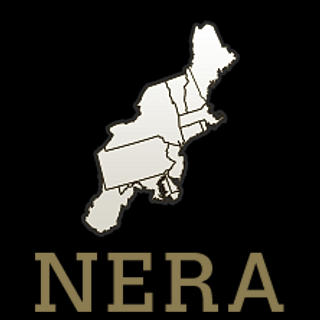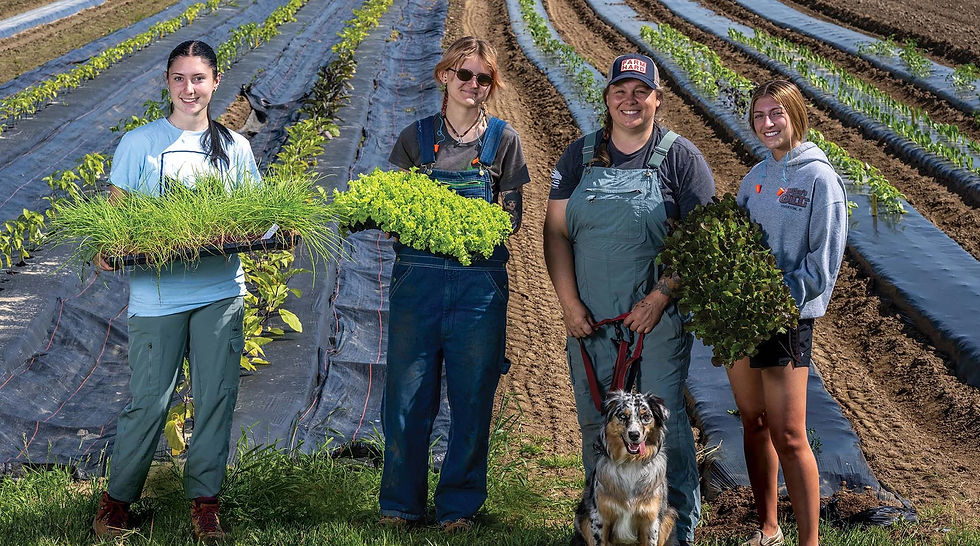Protecting the Northeast’s Natural Legacy: Land-Grant Institutions Champion Environmental Stewardship
- nerasaes
- Apr 28
- 3 min read
Article by Stacey Stearns, UConn Extension
Across the Northeast’s many landscapes—stretching from coastal watersheds to forested hillsides—land-grant institutions are leading collaborative efforts to protect natural resources and promote environmental resilience. Through science-based conservation, innovative land management, and community partnerships, these universities are fulfilling their shared mission to ensure a regenerative, livable, and vibrant region for all.
Restoring Riparian Zones and Waterways in New Hampshire
In New Hampshire, researchers and Extension professionals are tackling erosion and habitat loss by restoring riparian zones—critical buffers between land and water. The team installed over 500 feet of erosion-control materials and native vegetation, leading to visibly reduced erosion and improved wildlife habitat. The initiative included community engagement, offering workshops and volunteer planting events that deepened local investment in river health.
This work not only benefits fish and wildlife but also contributes to cleaner waterways and greater resilience against stormwater runoff—challenges intensified by variable weather. It directly reflects the Northeast Agenda’s call to lead adaptation and mitigation while promoting environmental health.
Forest Stewardship for Healthy Ecosystems in Rhode Island
The University of Rhode Island’s effort to build forest stewardship capacity exemplifies long-term sustainability planning. The initiative offered forest landowners an extensive educational series on wildlife habitat, invasive species, and environmental resilience, helping them develop tailored management plans.
The result? Hundreds of acres of forestland are now under active stewardship, ensuring healthy forest ecosystems and mitigating carbon emissions. By empowering local landowners to act as stewards, this project supports the Northeast Agenda’s commitment to vibrant communities and working lands.
Community-Led Shoreline Protection in Connecticut
In Connecticut, researchers responded to growing community concern about erosion and flooding along coastal areas by testing and demonstrating innovative “living shoreline” methods. With funding from NOAA and the Long Island Sound Study, the project deployed marsh plantings, coir logs, and oyster shell breakwaters to reduce wave energy and rebuild habitat.
This approach not only stabilizes shorelines but also enhances biodiversity and supports water quality. Local municipalities and community organizations are now adopting these practices, showcasing the power of community-academic collaboration.
Preserving Working Lands through Easement Stewardship in Vermont
At the University of Vermont, land conservation is getting a technology-powered upgrade. Staff supported a large land trust in improving its stewardship of 600 conservation easements across 13 counties—representing over 160,000 acres of farmland, forest, and wetlands.
By integrating drone imagery, GIS analysis, and streamlined digital monitoring tools, the team enhanced the land trust’s ability to protect environmental resources. This work embodies the Northeast Agenda’s emphasis on innovation and sustainable land use.
Rehabilitating Soil and Wetlands in West Virginia
West Virginia State University is applying phytoremediation—plant-based remediation—to improve soil and water quality in abandoned mine lands. Using switchgrass and other native plants, researchers are rehabilitating degraded areas while sequestering carbon and improving soil fertility.
The project includes a strong Extension component, with community members and students involved in environmental monitoring and planting. This inclusive model advances both ecosystem health and environmental literacy, a core Northeast Agenda priority.
Managing Water and Building Capacity in Maine
The University of Maine is ensuring that rural towns have the tools and training to manage local water resources wisely. Through one-on-one consultations, workshops, and hands-on assessments, the program helped communities create actionable plans to protect water quality and reduce pollution.
This work is particularly critical in Maine’s headwater regions, where upstream interventions safeguard downstream health. As part of a broader Northeast strategy, it showcases how Extension partnerships strengthen environmental decision-making at the local level.
Shared Vision, Regional Impact
From coasts to forests, each of these projects reflects the Northeast Agenda’s priorities: collaborative action, sustainable land and water use, and resilient communities. While the landscapes and communities differ, the shared vision is clear, environmental stewardship is a cornerstone of regional vitality.
As the Northeast faces growing environmental challenges, the region’s Land-grant institutions are stepping up with evidence-based solutions and a commitment to shared prosperity. These efforts, rooted in the Land-grant mission, show what’s possible when research, education, and extension align for the common good.




